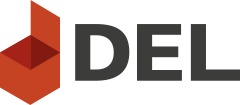Embodied Data: Experiential Approaches to Teaching Creative Coding
Case study: Kimberly Lyle (Penn State)
Abstract
I work with first-year digital art and design students that come into the classroom with very different skill levels depending on the privilege of their earlier educational experiences. The pandemic intensified this with the transition to online learning. While I previously used informal and one-on-one time with students to bridge this deficit, online learning left little space for these interactions. This was especially true when teaching a unit on creative coding, as the learning curve is steep and the logic-based material can be intimidating. This led me to ask: How can I bridge the gap between students with advanced technical skills and those learning them for the first time in an online space? Might incorporating the body when teaching traditionally ‘mind’ focused technical skills like coding create a shared point of entry? Could embodying these algorithmic concepts make the material more accessible to a wider range of learning styles? Coding is traditionally disembodied and virtual by nature. To bridge student gaps in skill sets and learning styles, I began to rethink how learning might happen outside the confines of the Zoom grid and classroom architecture. I designed exercises and a project that translated algorithmic thinking into bodily movement, lived experience, and manual data collection. This presentation will focus specifically on the Data Self-Portrait Pattern project and several smaller exercises that reinforced programming skills. This project asked students to manually collect data for a week on an everyday action they performed. Students then used code to translate their data into a pattern of related shapes and colors. Example datasets included the number of times a student was unable to taste food due to COVID-19, the intensity of emotions felt when communicating with a significant other over the phone, and the number of times a student was unable to hold eye contact because of shyness. Grounded in embodied experience, students became experts of their concepts. This paved the way for more confidence when learning the technical skills required to communicate their data visually. It also challenged those with strong technical skills to consider the meaning of the work they were creating. It’s important to acknowledge that experiential learning is not new. It has been extensively researched in the areas of psychology, neuroscience, philosophy, Buddhist studies, and cognitive science for its positive effects. Especially for students with diverse learning styles or invisible disabilities such as autism spectrum disorder (ASD). However, it is rarely implemented in Western classrooms. bell hooks is one of the most notable advocates. In her book “Teaching to Transgress”, she encourages educators to make our bodies visible in the classroom as one way to deconstruct how power has been distributed in the institutionalized spaces of higher education. I hope to encourage a conversation around the many ways this might be possible in hybrid and online art and design education.
